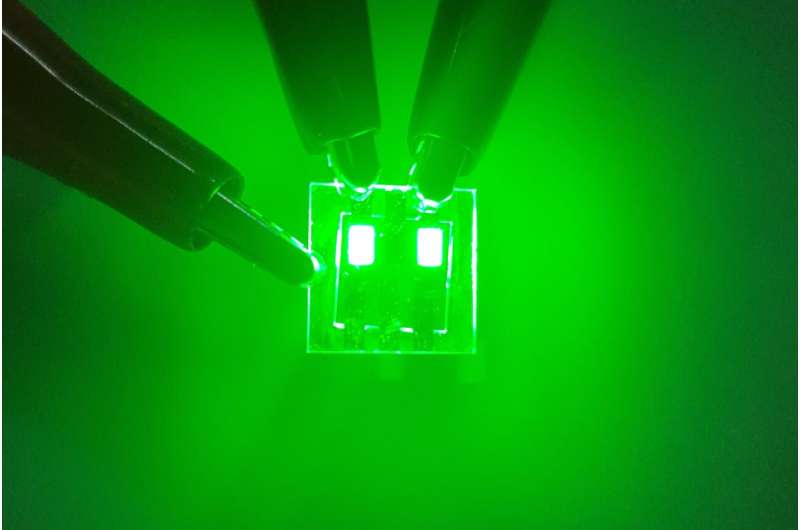
Researchers at the Hong Kong University of Science and Technology (HKUST) have achieved a significant breakthrough in display technology with the development of quantum rod light-emitting diodes (QRLEDs). Announced on July 15, 2025, these next-generation QRLEDs promise to enhance visual quality in smartphones, televisions, and augmented and virtual reality devices with their exceptional brightness and color richness.
The innovative QRLEDs feature optimized deep green emission at the peak of the color triangle, which allows for displays to exhibit previously unattainable color purity. These advancements not only triple the brightness of earlier models but also extend their lifespan, setting a new standard in energy efficiency and visual performance.
Addressing Challenges in LED Technology
Light-emitting diodes (LEDs) have long been integral to electronic products, but recent advancements in quantum materials have led to the emergence of quantum dot LEDs (QLEDs) and QRLEDs. While both technologies promise narrow emission bandwidths and high color purity, QRLEDs hold an advantage with superior light outcoupling efficiency. Nonetheless, previous iterations of QRLEDs faced significant challenges, especially in their green emission capabilities, which lagged behind QLEDs.
Issues such as inefficient charge injection and electron leakage at interfaces hindered performance. Additionally, structural barriers like thick insulating shells and lengthy organic ligands complicated charge transport and stability.
A research team led by Prof. Abhishek K. Srivastava, Associate Professor at the Department of Electronic and Computer Engineering, addressed these challenges by creating a new class of green-emitting quantum rods. Their design features a customized core-gradient alloy structure with a minimized outer shell thickness, achieving a highly bright deep green emission (515–525 nm) that maximizes the color gamut.
The team also engineered rods with a uniform and smooth morphology, which, combined with shorter organic ligands and a bilayer hole transport layer, significantly improved charge balance and reduced electron leakage.
Significant Performance Improvements
The research paper detailing this breakthrough, titled “Highly Efficient and Stable Green Quantum Rod LEDs Enabled by Material and Charge Injection Engineering,” was published in Advanced Materials. Prof. Srivastava remarked on the achievement, stating, “We have successfully developed remarkably efficient and bright green-emitting QRLEDs by precisely designing the quantum rod composition, morphology, shape, and ligand structure.”
The new QRLEDs demonstrate several notable advancements:
– **Record Efficiency**: These devices convert electricity into light with an impressive 24% external quantum efficiency (EQE), surpassing older models that achieved 22% EQE.
– **Unmatched Brightness**: The QRLEDs produce 89 cd A−1, a measure of brightness per unit of energy, outperforming all existing QRLEDs on the market.
– **Ultra-Bright Output**: They shine three times brighter than previous green LEDs, achieving a peak luminance exceeding 500,000 cd m−2.
– **Longevity Leap**: The technology has shown operational stability exceeding 22,000 hours, making it suitable for commercial display applications.
Prof. Srivastava emphasized the importance of their work, stating, “Our research demonstrates that meticulous control over nanorod composition and interface engineering can lead to disruptive advances in optoelectronic performance. This paves the way for high-resolution, energy-efficient displays with unprecedented brightness and longevity.”
The implications of these advancements are vast, potentially transforming how consumers interact with technology. As QRLEDs become more widely adopted, we may soon see significant improvements in the quality of everyday devices, enhancing both user experience and energy efficiency.







